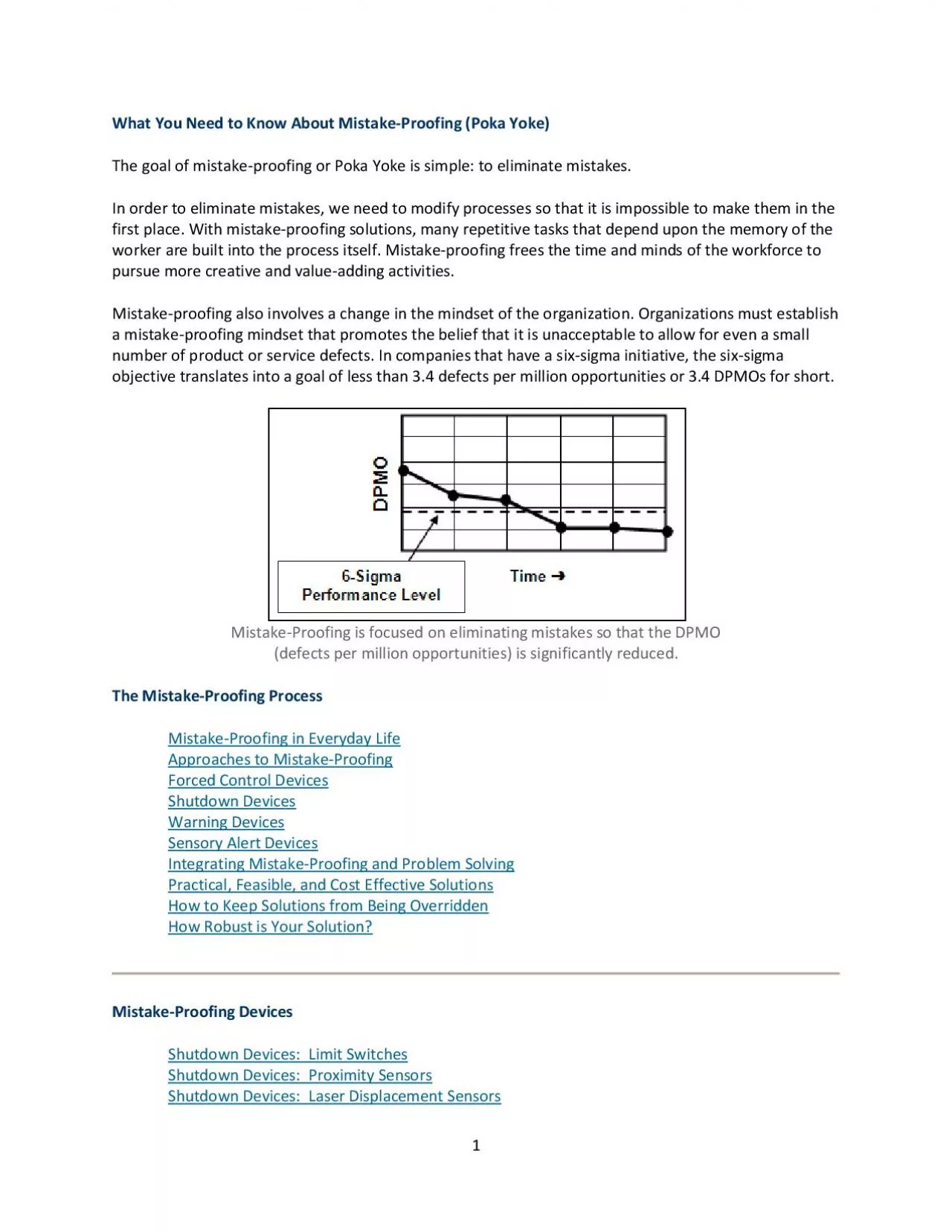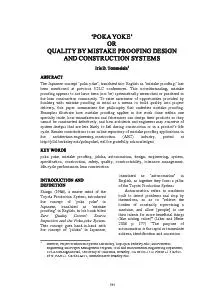PDF-What You Need to Know About Mistake
Author : ava | Published Date : 2021-06-08
1 Proofing Poka Yoke The goal of mistake proofing or Poka Yoke is simple to eliminate mistakes In order to eliminate mistakes we need to modify processes so that
Presentation Embed Code
Download Presentation
Download Presentation The PPT/PDF document "What You Need to Know About Mistake" is the property of its rightful owner. Permission is granted to download and print the materials on this website for personal, non-commercial use only, and to display it on your personal computer provided you do not modify the materials and that you retain all copyright notices contained in the materials. By downloading content from our website, you accept the terms of this agreement.
What You Need to Know About Mistake: Transcript
Download Rules Of Document
"What You Need to Know About Mistake"The content belongs to its owner. You may download and print it for personal use, without modification, and keep all copyright notices. By downloading, you agree to these terms.
Related Documents














